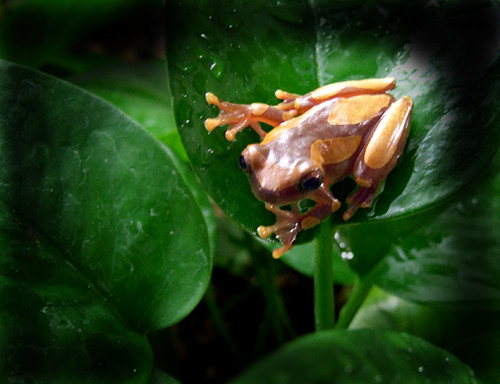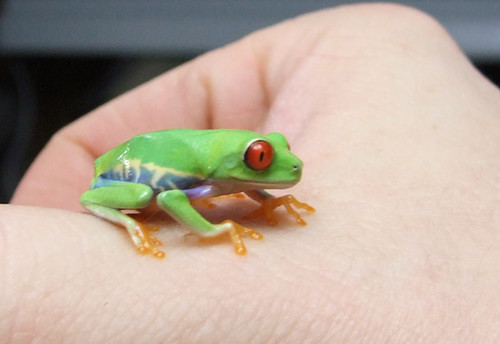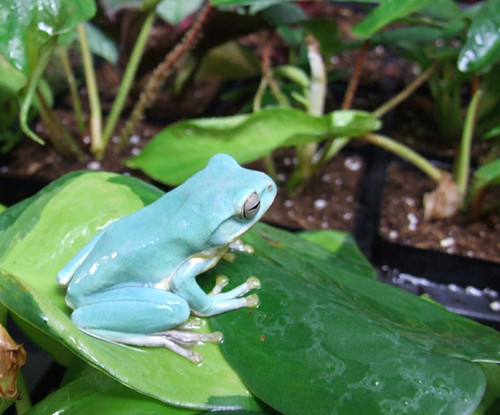Please note: the retail store has closed, we are leaving these posts up for historical purposes.
2008 has been named “The Year of the Frog” by conservation organizations including Amphibian Ark and theAssociation of Zoos and Aquariums, which notes:
“World Conservation Union (IUCN) estimates that at least one-third of known amphibian species are threatened with extinction.”

Phyllomedusa hypocondrialis “Tiger-leg Monkey Tree Frog”
photo by Jim Hitchcock Copyright 2008 Forest Frogs LLC
The AZA website goes on to say:
“While the major culprit has historically been habitat loss and degradation, many of the declines and extinctions previously referred to as “enigmatic” are now being attributed to the rapidly dispersing infectious disease chytridiomycosis, which is caused by the fungus Batrachochytrium dendrobatidis (Bd). Bd is causing population and species extinctions at an alarming rate.”

Dendropsophus (formerly Hyla) leucophyllata “Clown Tree Frog”
photo by Jim Hitchcock Copyright 2008 Forest Frogs LLC
Some scientists have suggested that the rapid spread of chytrid fungus may even be due to global warming, which is also affecting amphibian habitat by changing climates that frogs have adapted to over millions of years of evolution.
Forest Frogs LLC has joined the effort to save amphibians by supporting Tree Walkers International, a non-profit group that supports amphibian conservation through its Amphibian Steward Network, which is working to develop captive-bred populations of amphibians; Operation Frog Pond, which encourages the development of amphibian habitat; and Operation Atelopus, which, through film, tells the story of the Neotropical toad genus, Atelopus, also known as harlequin frogs, a species teetering on the brink of extinction.
We are also working on a TWI task force to explore a method of certifying “sustainably harvested” amphibians from the wild. The tropical lumber industry now has such a program, and with the demand for amphibians in the pet trade out-pacing captive breeding efforts, wild-caught specimens will probably remain common for the foreseeable future.
But, as this is the new year, and a time for resolutions, here is ours: Forest Frogs LLC retail sales will be 100% captive bred frogs by the end of 2008.

Captive-bred baby Agalychnis callidryas “Red-eyed Tree Frog”
photo by Jim Hitchcock Copyright 2008 Forest Frogs LLC
This resolution may prove challenging, as it is difficult to find captive-bred specimens of some species common in the pet industry, and there is often price pressure on available captive-bred species from wild-caught specimens. But, we will make every effort to achieve this goal. And you, our customers can help. Please choose captive-bred animals over wild-caught, when they are available. At times, this may mean a slightly higher price, but the difference is ususally negligible, and when you factor in the less stressed condition of most captive-bred animals compared to wild-caught, the pendulum of value often swings in favor of captive-bred.
We look forward to serving the needs of amphibian keepers in 2008, and hope to see you soon,
Jim and Marcia Hitchcock
Forest Frogs LLC
